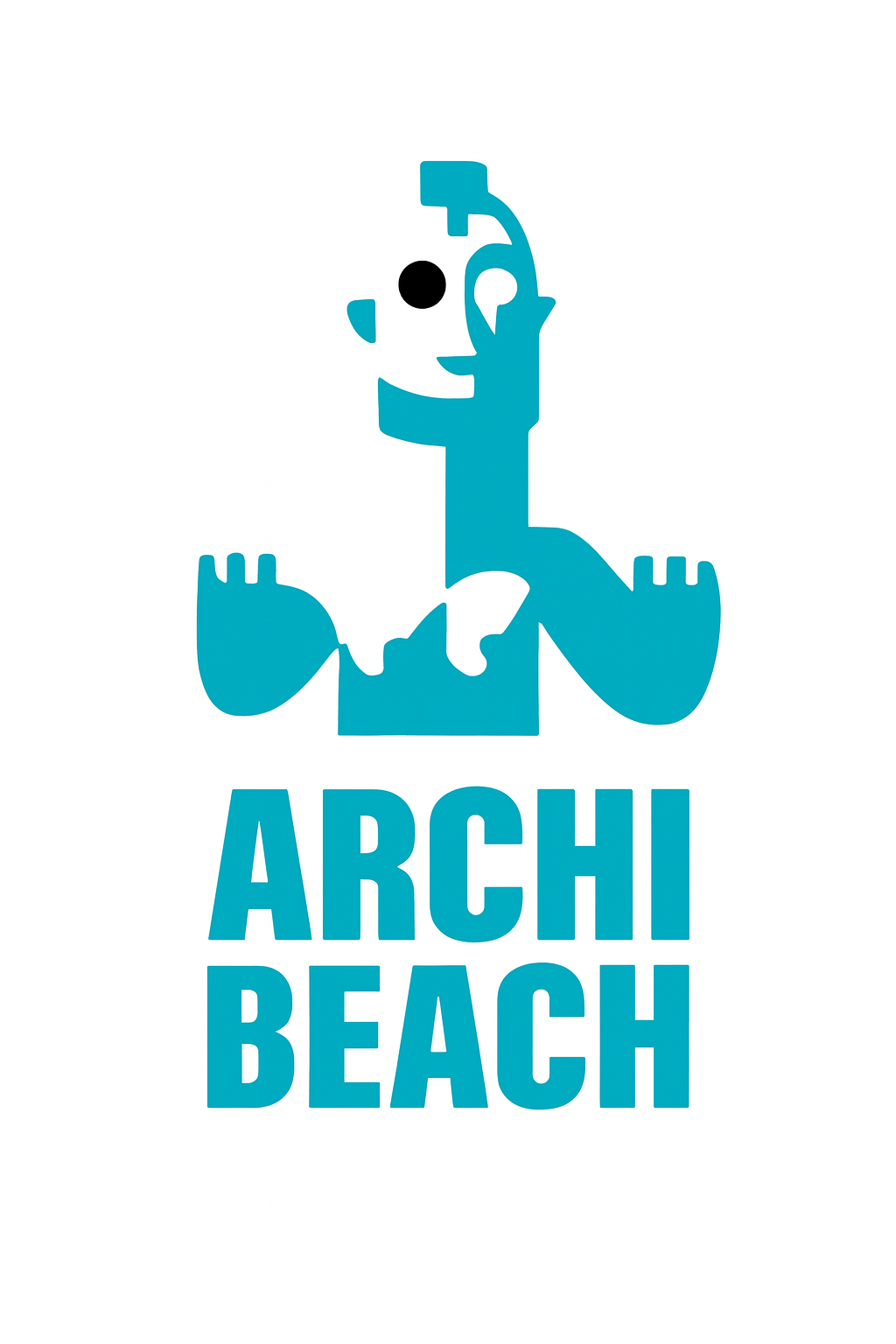The recent storm surges that flooded Italian beaches have once again highlighted a key question for beach club operators: to what extent are traditional shading structures truly safe and reliable?
While wood has long been the most popular choice, today it shows all its limitations in terms of maintenance, resistance, and operational management. Aluminum, on the other hand, offers a concrete and innovative solution to guarantee safety, solidity, and a high-level aesthetic impact.
An ever-changing environment
Over recent years, Italian beaches have been increasingly exposed to intense weather phenomena such as torrential rain, storm surges and strong winds. These phenomena not only have a negative impact on the beach itself but also frequently cause problems for the structures that furnish it.
The choice of materials is therefore a decisive factor that can no longer be only related to a question of aesthetics and resistance because those same materials have a direct impact on both daily management and the safety of workers and visitors of the beach.
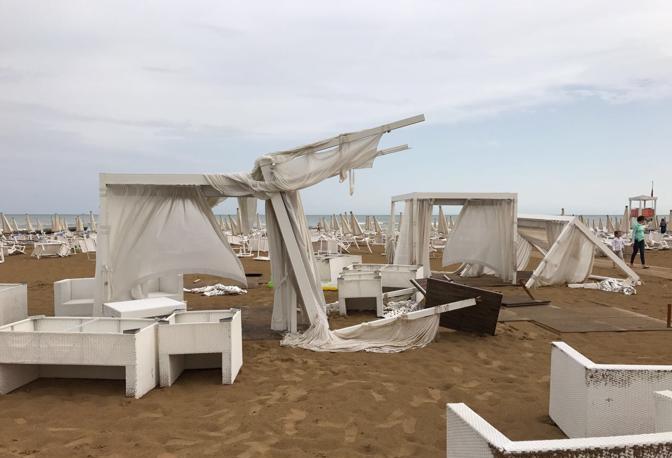
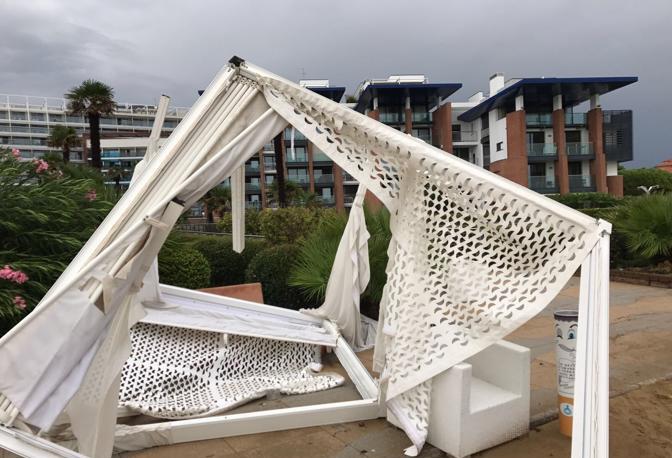
New regulations and challenges for beach club operators
The new regulations on State concessions, which were introduced by the Bolkestein Directive and the reform law of November 2024, have raised the attention level required by beach club operators. Nowadays, it is no longer enough to offer low cost services: all facilities must also be safe, certified and sustainable. European Standards such as UNI EN 13561 define strict performance requirements on wind resistance and stability for both awnings and shade structures. Moreover, certified origin (FSC) and life cycle assessment are also becoming increasingly important in regards to natural materials such as wood. Failure to comply with these Standards exposes operators to real risks: from failure to respect the new regulations on State concessions to potential civil liability in the event of an accident.
Wood: a tradition with significant limitations
Wood has been for decades the most popular material for beach facilities because it is affordable, easy to work with and has a natural look that appeals to a wide range of customers.
However, there is one crucial aspect that needs to be taken into account: the law states that only removable or transportable equipment and structures are allowed on the beach. They cannot remain on the beach out of season. This means that every year they must be assembled at the beginning of summer and dismantled at the end of the season for storage. In this context, lightness, ease of handling and resistance to assembly and disassembly cycles become decisive factors.
As a result, if we take into consideration all this new information, wood is proven to have significant limitations:
- False economy → the initial low cost is quickly overshadowed by its long-term expenses; wood requires constant maintenance and frequent replacement of beams and columns which, due to the high level of humidity during both use and storage, are prone to wrap and twist, making it difficult to align screws and dowels during seasonal assembly.
- Weight restrictions → wooden structures are much too heavy and cumbersome to handle; assembly and disassembly cycles become more complicated and, in the event of storm surges or strong winds, there is a higher risk of damage and collisions.
- Disassembly and storage → once wooden structures have been stored away, they take up a lot of space and they also are at risk of getting ruined, which creates an ongoing need for repairs.
- Limited security → handmade products do not provide the same structural resistance of metalwork and they hardly respect European Standards such as UNI EN 13561.
- Reduced sustainability → wooden structures often lack the FSC marking and are also subjected to chemical treatments; therefore, they have a short lifespan and are less sustainable than aluminum.
The Archibeach Cabana: aluminum that makes a difference
Archibeach defines its aluminum structures with the word Cabana, a technical term borrowed from the international language used by tourism and hospitality industries. These are not just simple gazebos, but genuine beach houses, developed to bring together functionality, safety and design.
Main benefits
- Engineering design → designed to withstand repeated cycles of assembly and disassembly without losing its original shape.
- Certified security → adhering to European Standards (e.g. UNI EN 13561) guarantees the safety of operators, clients and third parties.
- Resistance to wind and other atmospheric agents → anchoring systems ensure stability even in the event of storm surges and summer storms.
- Low maintenance → aluminum is not affected by salt and it only needs periodic checks.
- Easily removable → thanks to its lightness and manufacturing precision, assembly and disassembly cycles are faster and safer compared to traditional wooden structures, thereby reducing both time and management costs.
- Environmental sustainability → aluminum is a 100% recyclable material and it has an extremely long lifespan.
- Customization and design → it gives access to a wide color selection, wood-effect finishes, sunshade walls, fixed or opening roofs and side curtains.
Beyond the technical aspects highlighted above, the Cabana has a strong visual impact: a neat and cosy structure conveys quality and attracts more customers, effectively setting itself apart from its competitors.
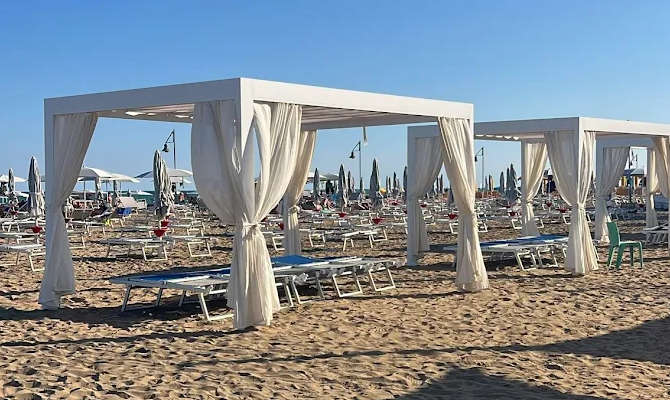
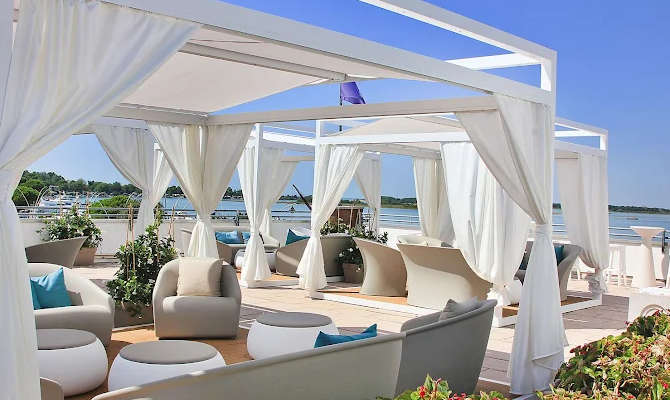
Wood vs Aluminum: a quick comparison
| Aspetto | Legno | Alluminio (Cabana) |
|---|---|---|
| Initial Cost | Lower | Higher |
| Maintenance | High, regular | Greatly reduced |
| Lifespan | Limited | Extensive |
| Safety | Often uncertified | Certified, engineered |
| Environmental sustainability | Recyclable, but with limitations (lack of FSC marking, subjected to chemical treatments) | 100% recyclable, endless recycling cycle |
| Assembly / disassembly | Heavy and cumbersome to handle, higher risk of damage | Easy, quick, safe |
| Aesthetics | Traditional | Modern, customisable |
Wood will always retain the charm of tradition, but it is no longer able to meet the operational, regulatory and safety requirements that have now become essential in the beach industry.
Archibeach aluminum structures represent a solid, modern choice: they are safe, certified and durable. As such, they facilitate quicker assembly and disassembly cycles and enable operators to meet all the new regulatory challenges through the use of reliable and aesthetically impactful products.
